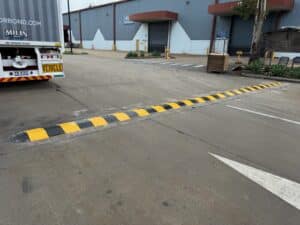
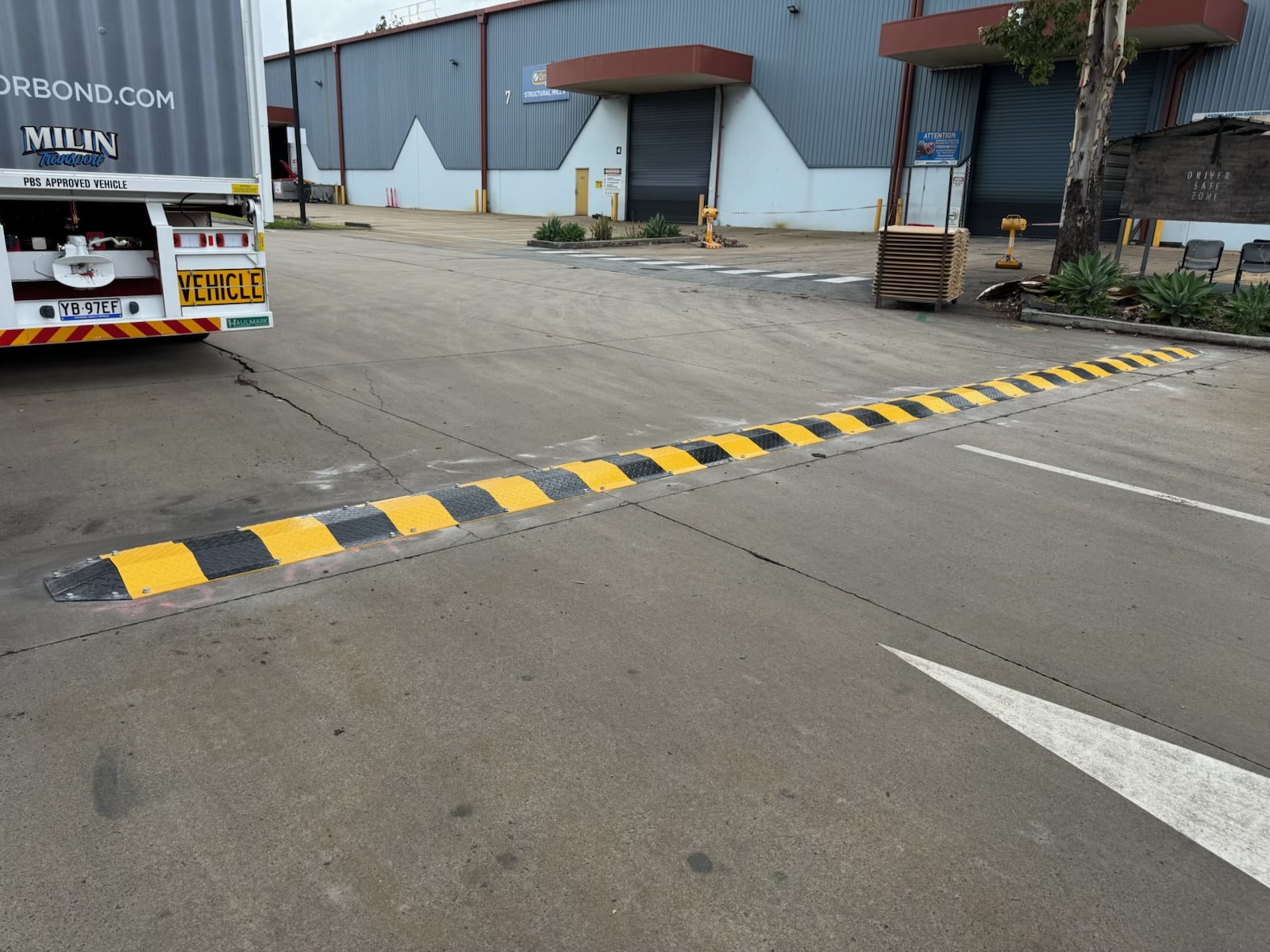
Council owned roads carry a unique responsibility. They are not just for traffic. They often run through parks, sports precincts, community hubs and residential zones.
But here’s the issue. Despite good intentions, some safety hazards consistently slip through the cracks.
Whether it’s an internal access lane beside a sports complex or a narrow service road behind a shopping centre, the same issues keep showing up during our site assessments. These are not just minor oversights. They are real risks to residents, children, cyclists and council staff, and potential legal liabilities.
Here’s what we find most often, why it matters and how to fix it.
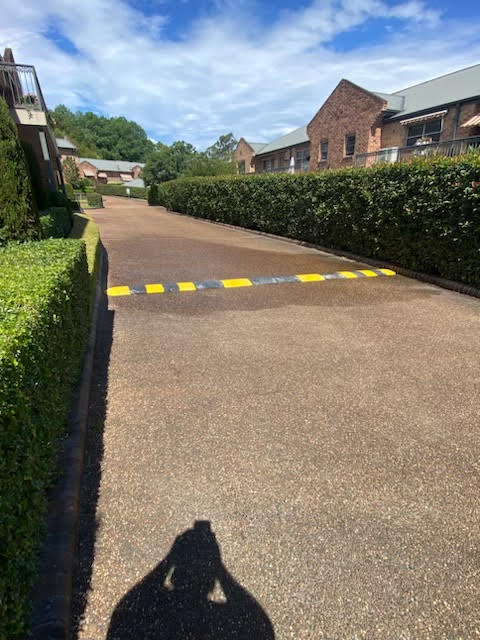
The hazard
Many council roads back onto buildings, facilities or lots with tight driveways. Too often, these offer drivers little or no line of sight when reversing or entering. This is especially problematic where footpaths or bike lanes run alongside.
The risk
Reversing vehicles can strike children, cyclists or pedestrians without warning. This is common near community halls, libraries and kindergartens where foot traffic is high.
What we recommend
• Install rumble bars at the driveway edge
• Add convex mirrors where sightlines are poor
• Use high contrast pedestrian crossing paint
• Relocate vegetation or bins blocking visibility
The hazard
Pedestrian paths are often placed directly beside vehicle lanes with nothing more than a painted line for separation. When it rains or drivers cut corners, pedestrians are left exposed.
The risk
One distracted driver is all it takes to veer off course. This is especially risky around schools and aged care facilities.
What we recommend
• Install wheel stops or bollards between path and road
• Add rumble bars on the vehicle side to push drivers back
• Elevate the pedestrian path or add a kerbed buffer
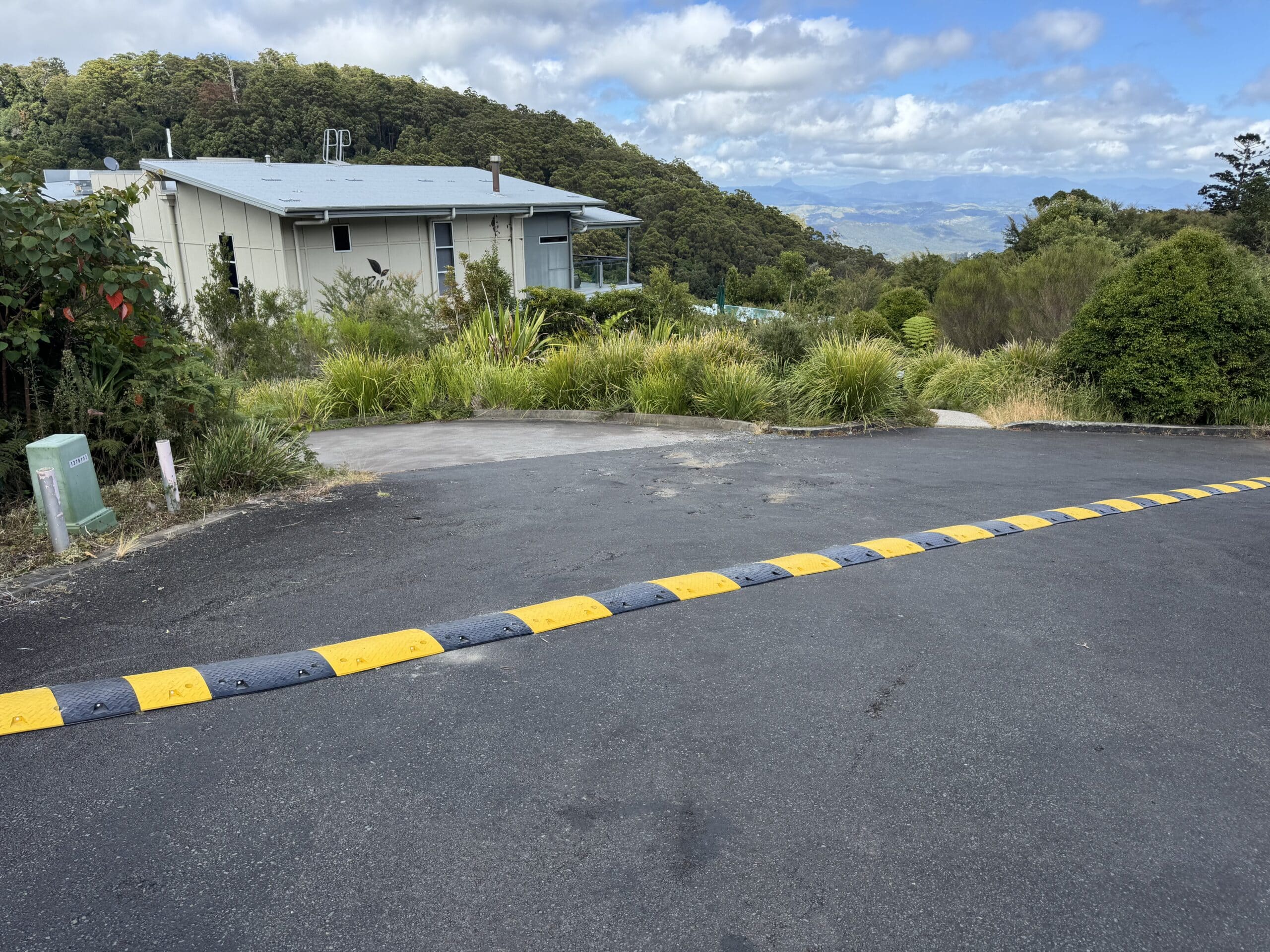
The hazard
Council owned shared use roads often have long, flat sections that encourage speeding where foot traffic is expected.
The risk
Without physical speed controls, drivers treat these areas as shortcuts. This creates serious danger for pedestrians and cyclists.
What we recommend
• Install flat top speed humps at regular intervals
• Narrow the visual corridor using alternating parking bays
• Add signage for speed limits and shared zones
The hazard
Exit ramps are often surfaced with smooth concrete or asphalt. When wet, this creates conditions for skidding and delayed braking.
The risk
Vehicles can slide into traffic or strike pedestrians waiting at crossings below the slope.
What we recommend
• Add speed humps at top and bottom of the slope
• Use high friction surface coatings
• Install warning signs to reduce approach speeds
The hazard
Maintenance depots and back of house service roads often feature tight corners with no markings. This results in wide and unpredictable vehicle movements.
The risk
This raises the chance of head on collisions, especially with unfamiliar contractors or fleet drivers.
What we recommend
• Use painted guide paths or rumble bars to direct turning
• Add centrelines even on narrow roads
• Place Give Way signs at conflict points

The hazard
Many footpaths in council zones lack tactile surface indicators at crossings and ramps.
The risk
Vision impaired users struggle to stay oriented and safe without cues to guide them through shared areas.
What we recommend
• Install tactile indicators at ramps and crossing points
• Consider audible pedestrian signals at busy crossings
• Keep footpaths level and free of obstructions
The hazard
Signage is often missing, damaged or obscured. In many sites, signs are hidden by overgrown trees or placed too close to the hazard to give time to react.
The risk
Drivers and pedestrians rely on signage to make quick decisions. Bad placement reduces reaction time and compliance.
What we recommend
• Upgrade to reflective signage
• Audit signage during peak usage periods
• Standardise signage across all council sites
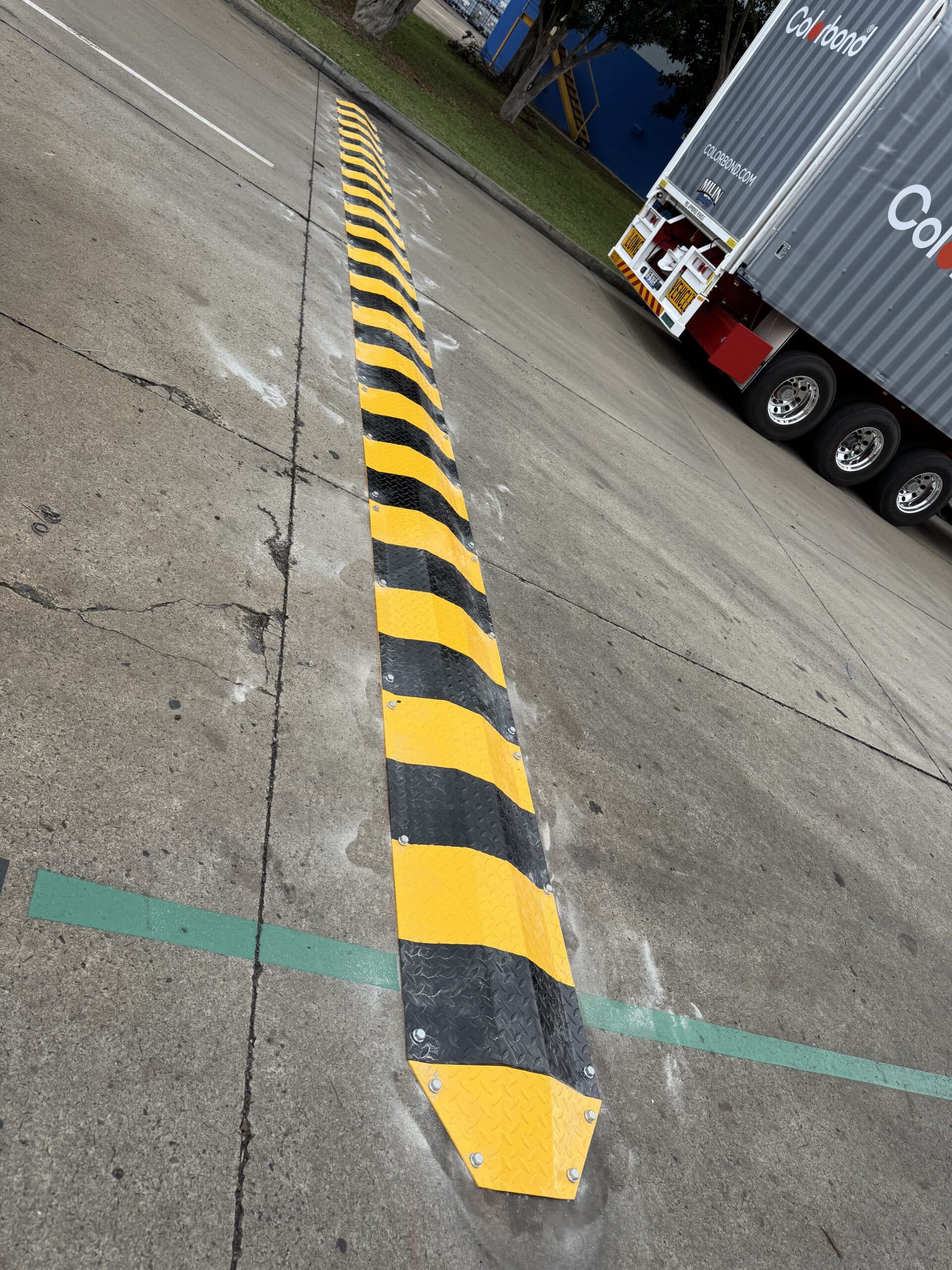
The hazard
Large car parks near ovals, pools or event venues often lack traffic flow design or pedestrian protection.
The risk
Drivers cut across bays, reverse unpredictably and speed through open areas. This raises the risk of accidents in high activity zones.
What we recommend
• Use bollards and stencils to create one way traffic flow
• Add zebra crossings where pedestrian movement is highest
• Install wheel stops to prevent overrun into walkways
The Fix Is Inspection Not Assumption
These problems are not always obvious in plans or satellite maps. They reveal themselves when people actually use the space.
That is why Speed Humps Australia offers free site assessments.
We walk the site. We observe how people move. We identify gaps that don’t show up on paper. Then we provide product ready recommendations to stop accidents before they happen.
Let’s Talk About Fixing Your Site
If you work in council roads, infrastructure or safety and you are dealing with speed issues, driveway visibility or pedestrian risks, we can help.
📍 Visit our Contact Page to book your free site inspection.
See our most recommended solutions here:
Speed Humps
Rumble Bars
Better outcomes do not always require bigger budgets. They start with better visibility on the ground.

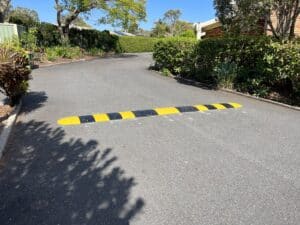

For 10 years, our focus has been on one thing: to provide one style of product and to do it well.
Our wheel stops, speed humps and rumble bars meet Australian Standards, don’t fade, and we’ve never needed to replace one.

For 10 years, our focus has been on one thing: to provide one style of product and to do it well.
Our wheel stops, speed humps and rumble bars meet Australian Standards, don’t fade, and we’ve never needed to replace one.